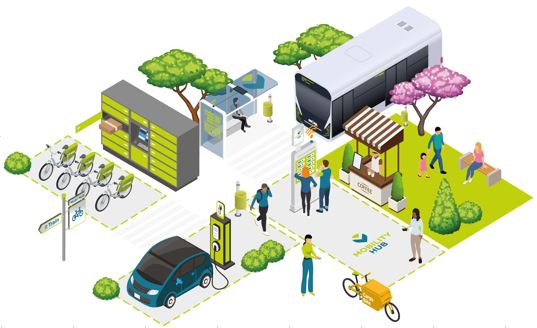To encourage and facilitate a shift from private vehicles to more environmentally-friendly means of transport, all means of transport need to be considered when planning for citizens’ mobility needs. Within the last years, many innovative mobility solutions, like on-demand services, shared mobility & micro-mobility or even automated services have emerged in European cities and have disrupted the conventional mobility system that is shaped by mono-modal transport. With these new offers, multimodal transport, defined as the use of several different forms of transport for different travel needs and journeys, and inter-modal trip chains have become a competitive and viable alternative to private car usage.

Source: https://www.eltis.org/in-brief/news/new-mobility-hub-guidance-published
While the new services are growing in popularity they ought not to replace but rather complement public transport systems and active modes. In that way, multi-modal, integrated, and robust public transport systems that function as the backbone of mobility is central to sustainable mobility systems.
There are two important drivers that can increase the viability of multimodal transport:
- Multimodal digital platforms allow for a variety of mobility services made available to users via an app. These apps usually include functions such as route planning and navigation as well as ticketing. The means of transport that can be accessed through these platforms should be as wide as possible and include also private mobility providers. An advanced version of this is Mobility as a Service (MaaS).
- Mobility hubs are a means to seamlessly link various modes of transport in order to enable inter-modal trip chains as an alternative to the private car. Mobility hubs link the use of traditional means of transport such as bicycles or cars with public transport (e.g. Bike & Ride or Park & Ride at train stations). Nowadays, mobility hubs also allow easy access to new forms of mobility or shared transport due to the widespread use of digital or smartphone based information and mobility services.
Comments ()